Silverback’s AAR
(Images courtesy of Beth Sundquist)
Recently I completed my first GORUCK event, the JFK Memorial Heavy…and then the Tough…and then the Light.
Yes, my first GORUCK event (ever) was an HTL, and I enjoyed it thoroughly. I profited greatly from the AAR’s of other GORUCK athletes and I want to return the favor by offering one from an outsider’s perspective.
The following is my experience and opinions. Take what you want, discard what you don’t.
About Me
I’ll start with who I am and a little background. I’m 37 years old and a father of three kiddos, ages 1, 4, and 8 years. I have a beautiful wife of 9 years that tolerates (and even supports) my weirdness.
I served briefly in the military as a young man. I wasn’t a ninja and I didn’t operate; I was just a wild kid.
I’ve spent the last decade in the oilfields of Texas and Oklahoma. It’s tough on men, tougher on families, and indiscriminately prunes the weak. I love it.
I’m a blessed man with a good life.
Why GORUCK?
I have a close friend that began to participate in GORUCK and he raved about the events. After listening to him and visiting some pages that he recommended, I suggested that we do a Heavy.
He told me, “no way”.
He politely suggested that I start with a Light or maybe a Tough.
Well, I felt a little insulted. After a bourbon or seven, I hopped online and signed up for the JFK HTL. Then I forwarded him the email receipts because that’s what friends do.
How
Now that the commitment had been made, I had to train to meet that obligation.
My training prior to signing up alternated between bodybuilding and powerlifting programs. While I had solid 1rm’s and a good build, my cardio and endurance were practically nonexistent.
I researched HTL and Heavy AAR’s and came up with three specific ‘knowns’ that I would need to prepare for: 2min push-ups (55), 2min sit-ups (65); 12-mile individual ruck (3:30).
Everything else seemed general and subject to cadre: I was going to have to walk a long way, do a bunch of fun calisthenics, and carry awkward things, all while wearing a ruck with a 30# pill.
Training
I changed my training regimen to a 2/day split for 6 days and a ruck on day 7.
On the splits, one session was dedicated to cardio (run, cycle, row, swim) and one session was resistance training.
My resistance training consisted of high reps and calisthenics (often weighted) in a continuous circuit. I would mentally set and commit to my reps before I walked into the gym every day. For example: Today I WILL complete 100 barbell squats at body weight, 100 barbell lunges at 135, and will run a quarter mile any time I need ‘rest’.
The typical day always had an order and a standard. I incorporated a lot of sandbag work, tire flips, and single arm/leg lifts. The workouts were set to be brutal, but also to change my training mentality to completing an objective rather than just getting a pump or hitting a programmed weight. I had to make the preset number or goal no matter how long it took or how bad it sucked. Every. Day.
Cardio was, well, cardio. Never the same thing two days in a row and always at least 30 minutes, but capped at an hour.
Two cardio sessions per week (day 3 and day 6) were ‘active recovery’ free swim. Basically 30 – 45 minutes swimming laps in any stroke. That sucked, but helped my joints and soreness tremendously.
The ruck day started on week 1, at a 4-mile distance, and went up 1 mile per week.
I rucked a GR1 with 30# plate in the inside elastic pouch. Then I would throw a loose 10# weight in the bottom of the main pouch. Loose weight in the bottom of the ruck made it pull harder on my shoulders and more uncomfortable…. which was the point. I didn’t take out the 10# weight until I arrived at the Heavy, and my ruck felt glorious afterward.
My goal for training rucks was to always have a sub 15:00/mile pace. By the last ruck, I could put down 12 miles in 2:30:00.
All of the training boils down to two things: time invested and discomfort endured. Every week I got better…and I would need every bit of it.
Diet
I won’t focus long here because it’s not that crazy.
I carb cycled to drop from 230 to 210lbs. A good bit was muscle, but I needed the extra cardio capacity and flexibility (I’m 5”9″).
One month prior to the event I started carbing back up and gained back 10 pounds of fluff. I wanted my body to have something to ‘eat’ during the calorie deficit from the HTL besides lean muscle.
I did not opt for any type of specialized diet as I wanted to be able to eat any type of food during the event and not worry about an adverse reaction.
Gear
As I mentioned earlier, I used a GR1 ruck loaded with a GORUCK plate. I outfitted it with a sternum strap, hip belt, and mesh water bottle pocket. All other gear considerations came from the GORUCK site and YouTube channel:
- Source bladder (be sure to tape around the quick-connect on the mouthpiece or it will pop off)
- Nalgene from my box of Nalgene’s
- GORUCK reflective bands
- GORUCK bladder hose retainer (in hindsight I believe the grimlock would have performed better)
- Petzl carabiners from my box of miscellaneous kit
- Black Diamond ‘Spot’ headlamp (awesome and easy to use)
- Small otter box (pelican case substitute)
- Large and small Sea to Summit dry sacks
- GORUCK Blister Kit and extra tape
Footwear
My training period was approximately 6 months in total. The first 5 months I trained in a pair of Lowa Zephyr Desert boots. Awesome boots and great to walk or jog.
Almost 1 month out to the day, I got a stress fracture in the 5th metatarsal of my right foot. I couldn’t continue with the boots, but I wasn’t going to concede. I stopped all running and rucking and finished the month with cycling, rowing, swimming, and cross country machines.
A week out I put on a pair of Innov8 Roclite‘s and did a small ruck run. The foot was a little tender, but much better than even walking around the house in the Lowa’s. I used the Innov8’s with Innov8 merino socks for the entire event and they did not disappoint.
Clothing
I did the Heavy and the Light in GORUCK Challenge Pants. I could not be more pleased.
I did the Tough in a pair of RailRiders Versa Tac Mid pants. The leg length was a little too long and the cuff kept getting caught under my heel. The Versa Tac’s performed great aside from the sizing issue.
Shirts were all poly blend and in layers. I used the GORUCK long sleeve rucking T as my external layer for two events and a generic poly long sleeve for one. The GORUCK are thicker and provide a better rash guard.
My base layer was generic UnderArmor type loose fitting short sleeve t-shirts. No issues there.
I used the GORUCK Challenge Windbreaker for all three events. Great construction, simple design, dried quickly and stops wind like a brick wall.
Intra-Event Nutrition
I approached event nutrition the same as a standard diet: carbs, fat, protein.
I doped my Source bladder with Tailwind and Ajinomoto Amino Vital Recovery: 2 packets Tailwind & 2 packets Amino Vital Recovery per 3L water.
I kept Cliff Bars and CorOmega MCT packets as my ‘food’.
My 1L Nalgene kept fresh water.
I tried to time my Cliff Bar/ MCT ‘meals’ every 4-6hrs, but this was heavily dependent on Cadre’s permission to eat. (side note: Sometimes forgiveness is easier to attain than permission. Make what you want of that.)
Peanuts were added in for the Tough and Light as I found myself craving a salty snack. I also carried ORS packets (TriOral brand) for emergencies.
The Event(s)
I’ll apologize in advance for my vagueness; you need to see them for yourself.
The Heavy
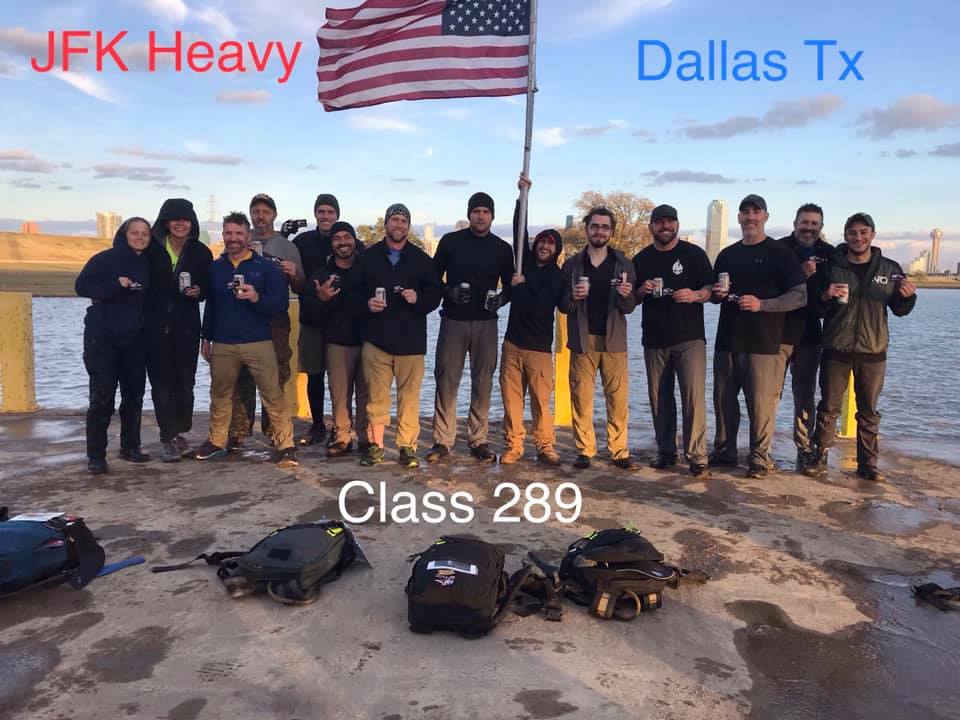
The Heavy kicked off as expected: admin, gear inspection, and a little smoke. Then I got hit with my first surprise, a 5-mile timed run. I had no idea that this would be part of the fit test.
At 5′ 9″ and 220lbs I am not a gazelle, more like a cross between a rhinoceros and a donkey.
I took off at my normal run pace and assessed my position in the herd about a mile in. I wanted to make sure that I finished in the top half of the class and adjusted pace to accomplish that.
Push-ups/Sit-ups were a breeze (pro-tip: they are easy if you practice).
I slowed my planned pace on the 12-mile in an attempt to factor in what I had already exerted on the unplanned 5-mile.
My preparation was still apparent; I believe I finished 3rd in the class. It pays to be a winner and I had plenty of time for foot care and rest.
The remainder of the heavy was all rainbows and stardust and s’mores with the Cadre.
The Tough
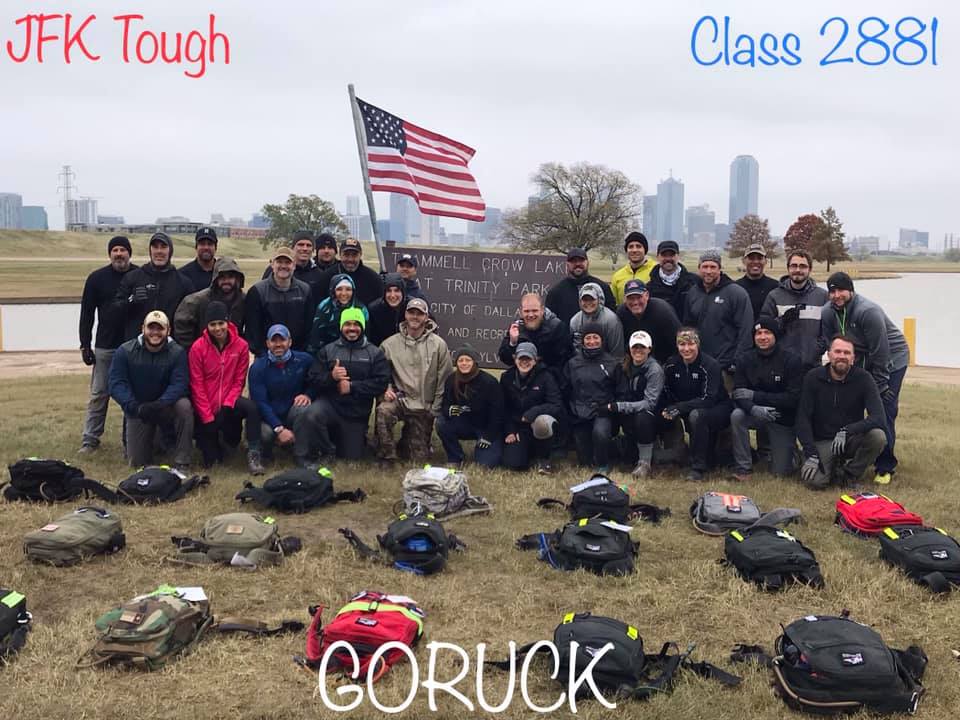
The Tough was, well tough for me.
I could not sleep during our break and had some injuries that had started talking to me. The new class’s energy was annoying. I wanted to sit in my pity diaper and whine to myself.
Well, you either snap out of it or you don’t…after a cup of warm cocoa with Cadre, I was fine.
The Light
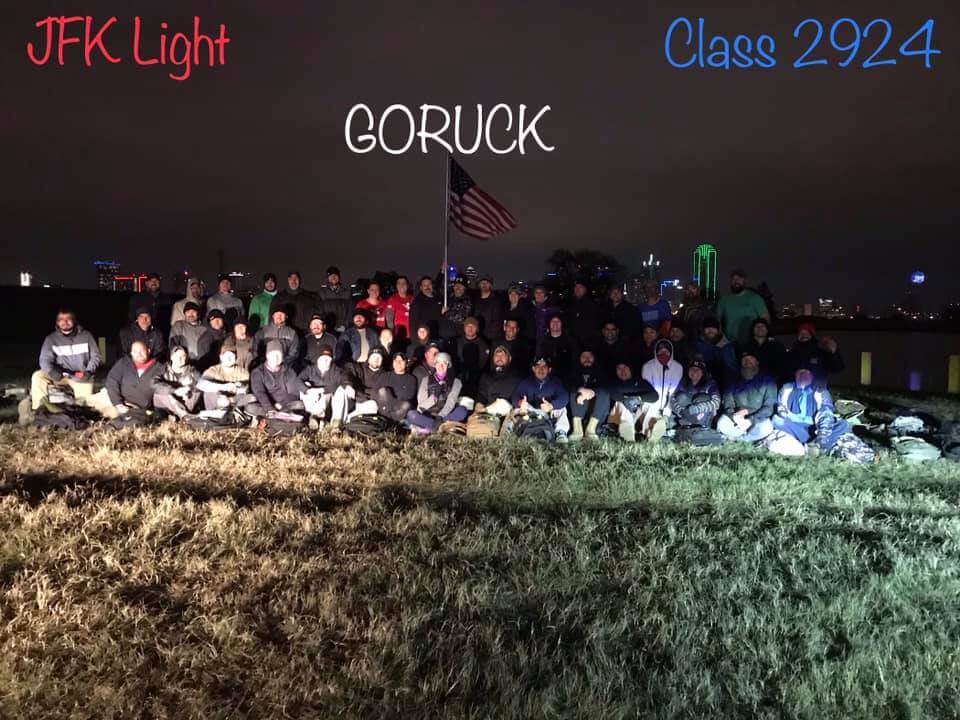
The Light class showed me that I was wrong in thinking that the Tough class’s energy was annoying. The Light’ers were hardened professionals in the discipline of annoyance.
But no worries, I was in a much better place mentally. I had slept and I had eaten my body weight in pancakes. Life was good again.
We shared skittles with the Cadre and called it a day.
The In-Between
Preparation for the transition between events can be just as critical as preparation for the events themselves.
Breaks between events are not in guaranteed intervals; they can range from 4 hours to as little as minutes. My transitions had two elements: a plan and a control.
While I could not control the amount of time, I could prioritize and control tasks to be accomplished.
My first priority of work was foot and injury care.
Second was food.
Third was shower.
Fourth was sleep.
I had arranged a room at a nearby hotel and transportation from my lovely wife. In the hotel were ready load-outs for the Tough and the Light.
All I had to do upon arrival was dump my ruck and insert the next respective load-out. Additional med supplies were in the hotel room as well.
Food was scoped out at nearby fast food joints days in advance.
The control element was my wife. My wife knows me inside and out. She knows that I will not quit and that I’m not afraid of driving into serious injury. She’s waited for me outside of more than one ER and operating room.
I gave my wife permission to call it off at her discretion. This isn’t for everyone, but it’s something that I needed.
All transitions went smoothly and per plan. My wife said later that she only worried looking at me between the Heavy and Tough. At that point fatigue and injuries (detailed below) were clear. My hamstring tear was discolored, support knee was swollen, and I had blown 4 toenails (One I had to excise completely with a pocket knife prior to the Tough).
Injuries and Considerations
At approximately mile 3 of the 5-mile run, I felt a sharp charley horse sensation in my left hamstring. In a later hospital visit, I would find that I had actually torn the lower medial head of my hammy.
By the end of the Heavy, I could not fully bend or straighten my left knee. The limping proceeded to wreck my right knee.
Lesson: Stretch thoroughly when given the opportunity.
The knee swelling in my right leg from limping was pretty gnarly. I had a tube of Ibuprofen packed and was downing 800mgs/6hrs. I also wore RockTape Assassin knee sleeves for all three events (thanks Selection). The added support was hugely beneficial. I pulled them down around my calves when not needed.
Lesson: Plan for minor injury or irritation of old injuries. I knew my knees could be troublesome, hence the sleeves. Pack Ibuprofen and any other ancillaries you may need.
Approximately 14-16hrs into the Heavy, I got some funky water in my source bladder from a fill station. I got nauseous and stopped drinking water; within an hour I vomited everything out of my stomach and was pissing hard yellow. I had packed ORS packets in my kit and those had me right within 30min of administration.
Lesson: Carry some damn ORS; a Nuun tab will not save you in the event you get sick (top or bottom side)
-Throughout the HTL as a whole, I lost 5 toenails. Both big toes, both index toes, 1 pinky toe. I had the necessary kit (and self-education) to address the injuries as they occurred.
Lesson: Pack a foot care kit and know how to use the damn thing. Wear shoes with adequate room in the toe box. Mine were snug and should’ve been a half size larger.
The Why
I believe everyone needs a why. What drives you? Are you doing this for yourself, a loved one, a friend, your kids…why? And don’t settle for some cliché BS.
I would advise that you truly push yourself in training and discover your why.
Get to that place of pain where the only lens you are seeing through is your own, then ask yourself, “Why?” Mine is deeply personal and at times painful, as it should be.
Afterthoughts
If you want to do an HTL, then sign up and do it.
I read a lot of excuses about why people can’t or why it’s not the right time or why “insert quitter logic here”. Just harden the f@ck up and do it. Sign up. Train. Execute.
Training is going to hurt. The event is going to hurt. But if you learn the difference between pain and injury, you will push through discomfort that would stop the common man.
If you only attempt and complete an event that has a 100% pass rate, what did you accomplish? But even if you try and fail an HTL, you will come away a better person.
I believe that if there is no chance at failure, then there is no chance at success.
Thanks for reading.
RLTW,
Silverback



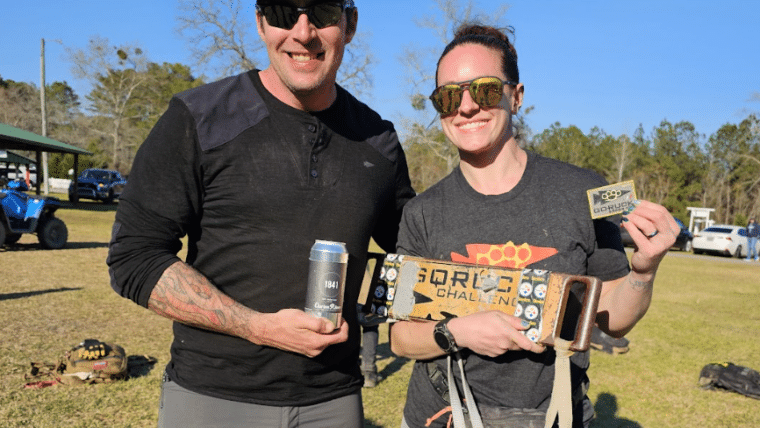

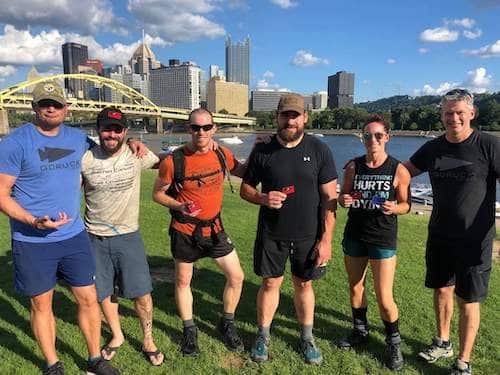
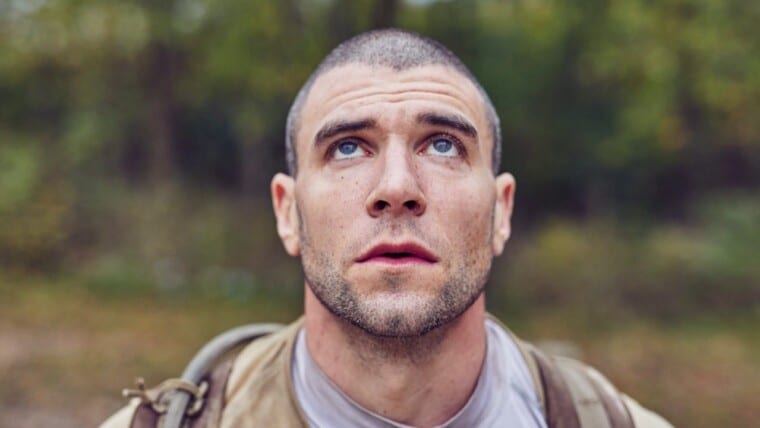
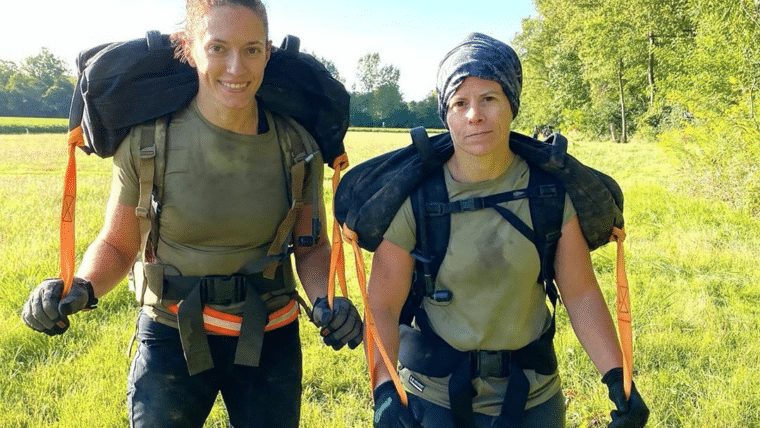
2 Replies to From Zero to HTL
Well Played Young Man, Well Played!
Thank you! Great job! You guys from Texas are definitely cut from a different mold!
Comments are closed.
Which GORUCK Bag Should I Buy?
GORUCK Ballistic Trainers – Long Term Review
GORUCK Coyote Ruck Dye Guide
GORUCK Kydex Frame Sheet Upgrade Instructions
Which GORUCK Bag Should I Buy?
GORUCK Rucker 4.0 Review
GORUCK Simple Sandbag & Sandbag 2.0 Review
GORUCK Weight Vest Review (with Video)